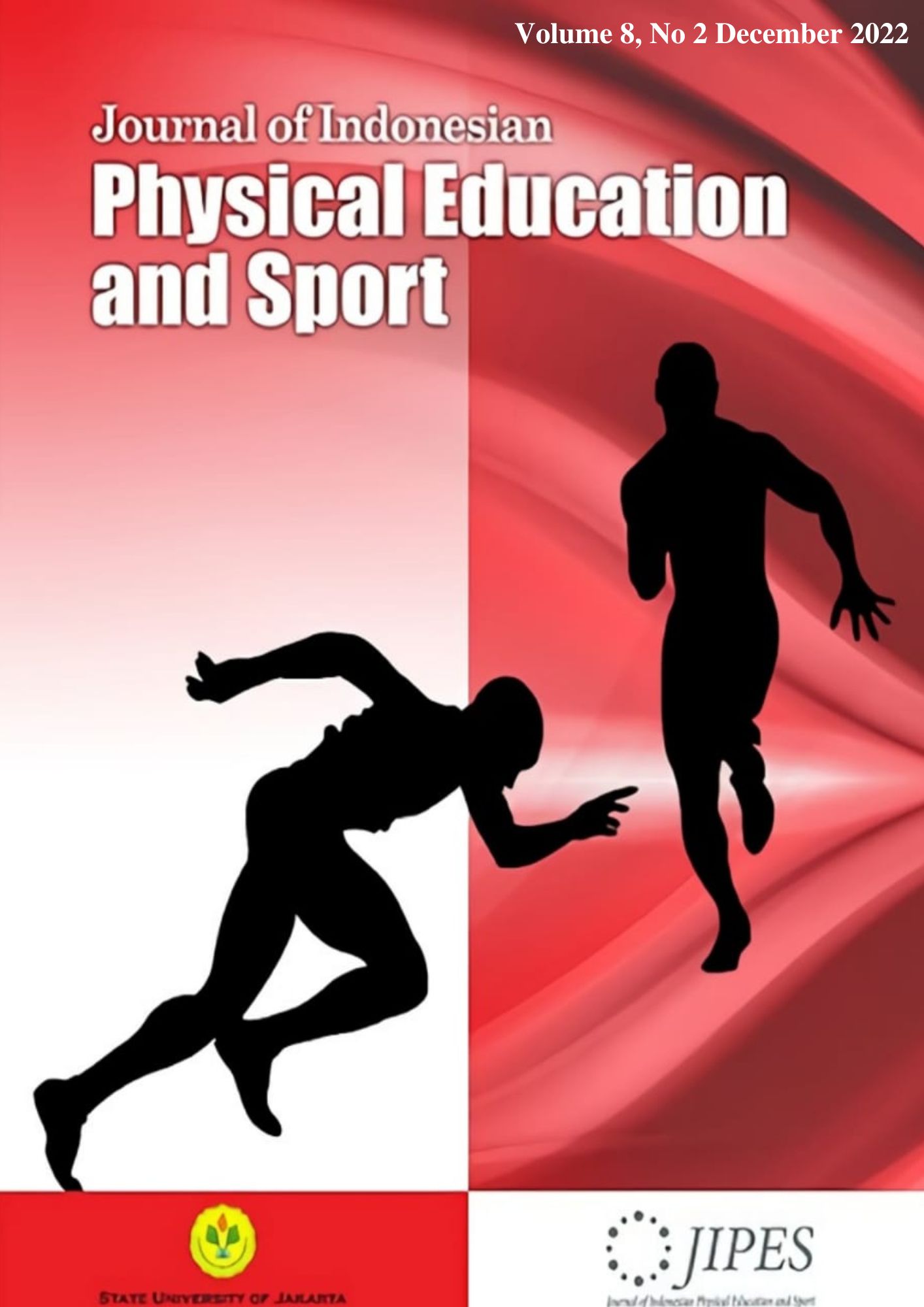Effect of training and recovery methods on vo2max athletes of unsika rowing club by controlling the effect of leg length
DOI:
https://doi.org/10.21009/JIPES.082.02Keywords:
vo2max, training method, recovery, leg length, rowingAbstract
A well-executed training program using the right training method will result in an athlete's performance if the athlete gets sufficient recovery to recover from post-exercise fatigue. To find out the athlete's performance by knowing the oxygen volume capacity by using the balke test but the leg length of each athlete is suspected of contributing in carrying out the test so researchers want to examine the Effect of Training and Recovery Methods on VO2max of UNSIKA Rowing Club Athletes by Controlling the Effect of Leg Length. quasi-experimental method with a 2 x 2 factorial design. The research variables consisted of: (1) the dependent variable, namely VO2max Athlete Rowing Club UNSIKA (2) independent variables, namely the treatment variable (A1: Cross country method, and A2: Fatlek) and attribute variables ( B1: Passive Recovery and B2: Active Recovery) and (3) the covariate variable, in this study was Leg Length. So that the total number of research samples is 80 people. The Balke test is the test instrument used in collecting Vo2max data. as well as a tape measure to measure leg length. Hypothesis testing was carried out using two-way covariate analysis (ANKOVA) with a 2x2 factorial design. The results of the first hypothesis testing showed that the Vo2max results of the UNSIKA rowing club athletes between the athlete group using the cross country method were higher than the athlete group using the fatlek method after controlling for leg length. Thus the cross-country training method used in this study can improve the Vo2max results of UNSIKA rowing club athletes which are better than the fatlek method.
References
Azzannul Fitrah, YK (2019). Physical Conditions of High School Volleyball Players. Patriots Journal.
Firdaus, W., Nurhayati, M., & Football, KW (2022). FARTLEK EXERCISE IN IMPROVING PHYSICAL FITNESS. 317–321.
Gandhi, YMA (2019). The Difference between Active Recovery and Passive Recovery in Night Futsal Sports Against Lactic Acid Levels in Semarang Indonesia Futsal Association Players.
Hadiana, O., & Sartono. (2021). Improving Physical Fitness Through Cross Country Exercise Karate UKM Students During the Covid 19 Pandemic Improvement Of Physical Fitness Through Cross Country Exercise Karate Student Activity Unit During Covid 19 Pandemic. Physical Activity Journal, 3(1).
Harahap, IM, & K, FR (2016). Effect of Active Recovery (Jogging) on Reducing Lactic Acid Levels in Blood After Anaerobic Exercise (Interval Training). Journal of Sports Health, 5(2), 43–50.
Hasan Mustofa, FRK (2015). Knowledge Analysis of the Trainers of the Bumi Wali Tuban Handball Club on Recovery. Journal of Sports Health, Vol 7 No 2 (July 2019 Issue), 150–155. https://ejournal.unesa.ac.id/index.php/jurnal-kesehatan-olahraga/article/view/30276
Ilham, M., Rifki, MS, Health, J., & Recreation, D. (2020). Effect of Weight Training on Increasing Arm Muscle Hypertrophy of Rowing Athletes. Stamina, 3(6), 379–397.
Myakinchenko, EB, Kriuchkov, AS, Adodin, NV, Dikunets, MA, & Shestakov, MP (2021). One-year Periodization of Training Loads of Russian and Norwegian Elite Cross-country Skiers. Journal of Human Sport and Exercise. https://doi.org/10.14198/jhse.2021.163.18
Nirwandi. (2017). Bima Junior Football School. PENJAKORA Journal, 4(2), 19–20. https://ejournal.undiksha.ac.id/index.php/PENJAKORA/article/view/13362/8395
Shingala, M., & Shukla, Y. (2019). Effectiveness of Fartlek Training on Cardiorespiratory Fitness and Muscular Endurance in Young Adults: A Randomized Control Trial. Indian Journal of Physiotherapy and Occupational Therapy - An International Journal. https://doi.org/10.5958/0973-5674.2019.00051.0
Togala, Z. (2015). The effect of learning approaches and thinking styles on learning outcomes of electronics skills after controlling for prior knowledge. JTP - Journal of Educational Technology, 17(2), 129–140.
Trishandra, J., & Rois, M. (2022). The Influence of Circuit Training Exercises on the Physical Conditions of Athletes in Football at PS Debai Club, Sungai Full City. Muara Sports Journal, 4(2), 11–18. https://doi.org/10.52060/jmo.v4i2.816
Widodo, A., & Novitasari, Y. (2022). Riyadhoh: Sports Education Journal Available Online: https://ojs.uniska-bjm.ac.id/index.php/riyadhohjurnal WITH VO2MAX Fitness Profile of Futsal Athletes in Klaten Regrency Declared with VO2MAX UPT Journal Publication and Management Islamic University Ka. 5, 107–112.
Zulkarnain D. (2014). Differences in the Effects of Cryotherapy and Passive Recovery on Pain and Serum Creatine Kinase Levels in Student Futsal Athletes. University of Indonesia.










 </a > a
</a > a 